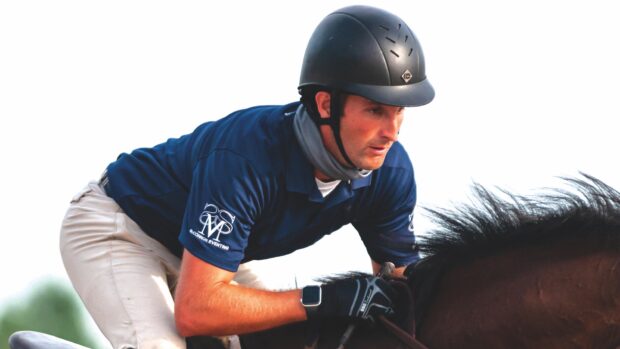An ethical training method is one that minimises negative equine welfare effects and maximises positive, and results in self-carriage without physical force.
This is the proposed FEI definition, as work continues on the equine welfare strategy action plan announced at last year’s general assembly (news, 21 November). Training is one of six focus areas of the plan, and was a key topic during a session on welfare at the 2025 FEI Sports Forum (31 March–1 April).
Work is ongoing towards the creation of an ethical training framework for horses in all FEI disciplines, to be delivered before the 2025 general assembly in November.
“The objective of our project is to formulate a globally applicable framework, and our main goal is to define ethical training and its principles, but also to identify acceptable practices that are supported by both science and expert consensus, which is super-important,” said Swedish researcher Malin Axel-Nilsson, a member of the newly appointed FEI Equine Advisory Welfare Group (FEAWG). This is overseeing the implementation of the action plan and working with the FEI’s ethical training methods expert consultative group.
“We have to collaborate and make our arguments understandable for all parties,” said Dr Axel-Nilsson.
FEAWG chair Jenny Hall delivered an update on another of the action plan’s focus areas, “fitness to compete”. Work has included an expert forum held at Jumping Amsterdam in January, at which topics included equine physical, medical and mental fitness before, during and after competition, travel and horse inspections.
Dr Hall said the forum concluded that horse inspections are “fit for purpose”. But although people can agree on an inspection when a horse is not fit to compete owing to lameness, a working group is to be formed to develop guidance for assessing when a horse is not fit for competition from a “behaviour and mental state” point of view.
Work is also ongoing towards standardisation of trot-up surfaces, and the equine prohibited substances list is under review to ensure it aligns with advancements in medicine.
Dr Hall said it was about ensuring that there is not a “blanket ‘no’ to things that could be beneficial to horse welfare, but making sure that our response is nuanced enough to have the benefits of modern techniques without being in any way adverse for the horse”.
FEI veterinary director Göran Åkerström shared a research update and said the roll out of the protocol for inspection of oral lesions, announced at the 2024 general assembly, is due either late 2025 or early 2026.
“We learnt that in order to make this a successful project for the sake of the horses, but also for social licence, we need to involve riders, grooms and all the stakeholders very closely,” he said.
“Therefore, when we roll this out, we will focus on engaging athletes and grooms, education and data collection, and initially it will be voluntary participation with very much a strong advisory focus.”
Dr Axel-Nilsson said another area of the action plan is the development of a framework to assess and evaluate equine welfare. A project is ongoing to define how the five domains horse welfare model is relevant to each discipline, and this will be delivered to each discipline in different formats and implemented in different ways.
During a press briefing, FEI secretary general Sabrina Ibáñez was asked whether progress around equestrian’s social licence to operate is being made fast enough.
“In-house, there are probably weekly meetings on the different action plan actions we need to establish, so I don’t think we can go faster than that. In addition, we need to do our regular work, so I think we’re doing the best we can with what we have,” she said, adding that updates will be shared at the general assembly.
- To stay up to date with all the breaking news from major shows throughout 2025, subscribe to the Horse & Hound website
You may also be interested in:

Optional double bridles and judges’ alert buttons among measures proposed in dressage

Key decisions concerning horse sport at LA28 Olympics expected in days

Subscribe to Horse & Hound magazine today – and enjoy unlimited website access all year round




